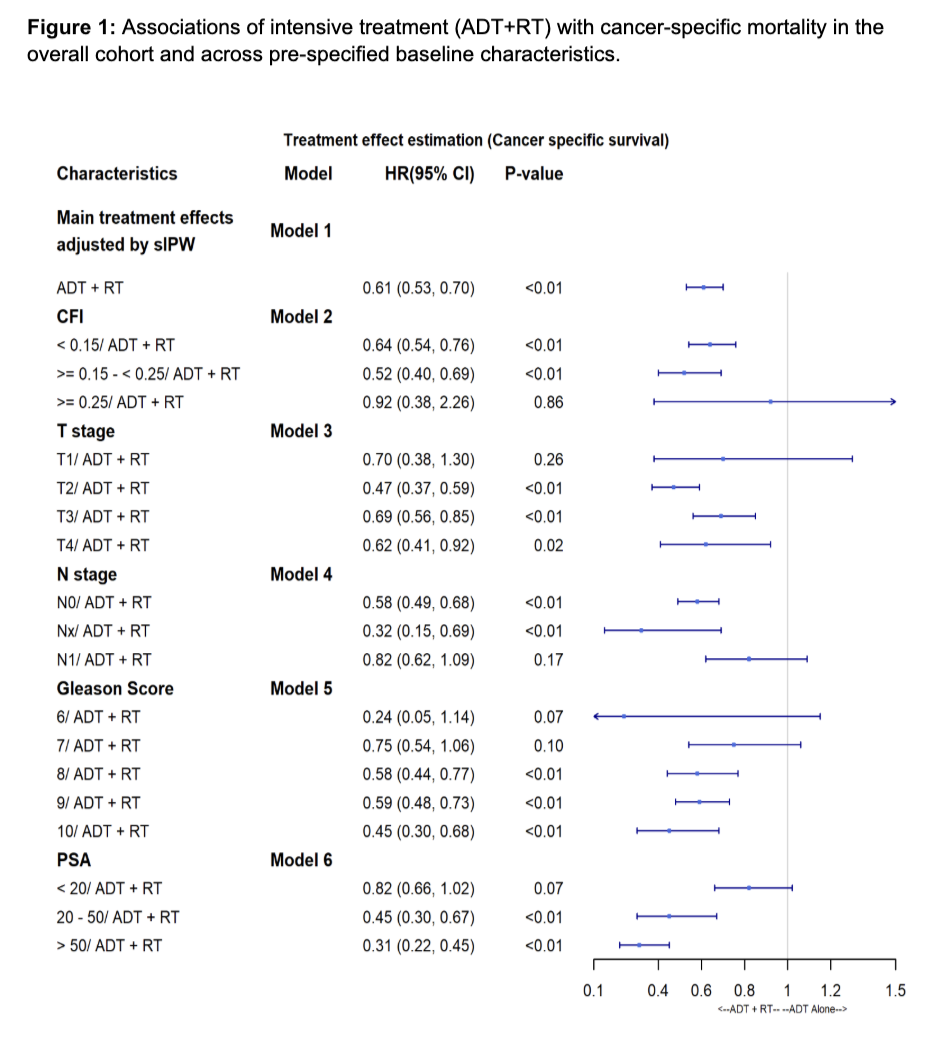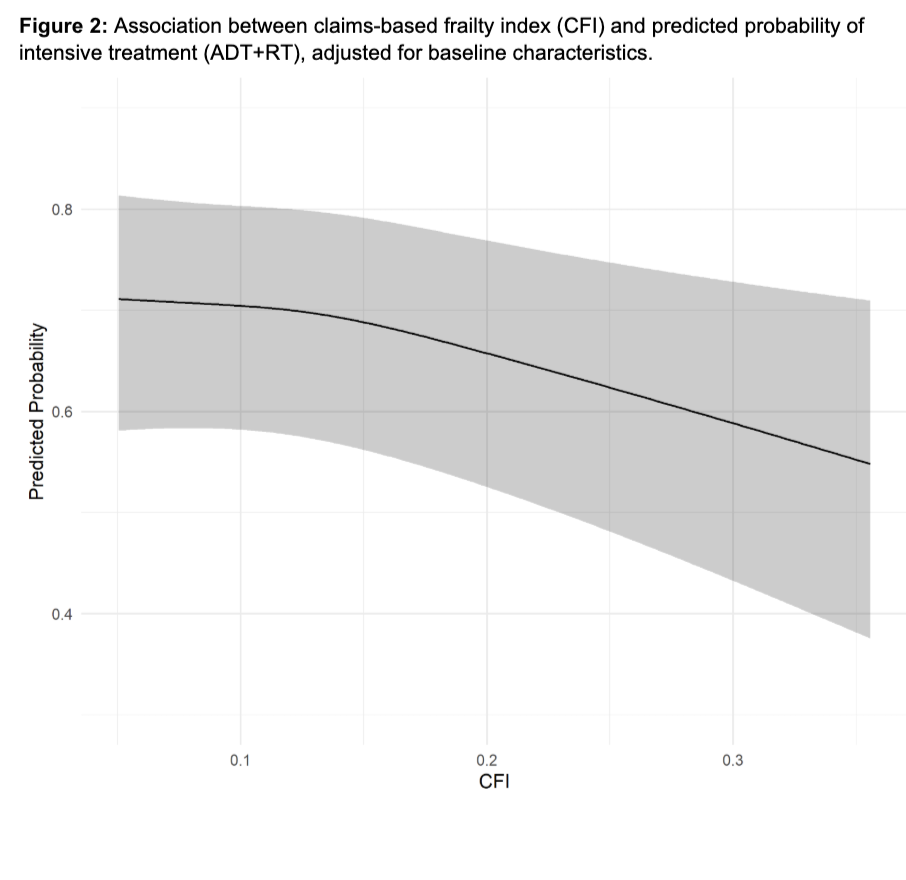Back to 2025 Abstracts
Baseline frailty, treatment intensity, and clinical outcomes among older adults with locally advanced prostate cancer
Agustin Perez-Londono, MD., Sumedh Kaul, MS, Aaron Fleishman, MPH, Ruslan Korets, MD, Peter Chang, MD, MPH, Andrew Wagner, MD, Aria Olumi, MD, Marc Garnick, MD, Boris Gershman, MD.
Beth Israel Deaconess Medical Center, Boston MA, MA, USA.
BACKGROUND: The addition of prostate radiation (RT) to androgen deprivation therapy (ADT) improves oncologic outcomes in patients with locally-advanced prostate cancer (PCa). However, this approach remains underutilized in older adults. We therefore emulated the NCIC CTG PR3/MRC PR07 clinical trial of ADT+RT versus ADT alone to examine clinical outcomes and the role of frailty as an effect modifier.
METHODS: We included adults aged 66-89 years with locally advanced PCa (cTanyN1, cT3-T4Nany, cT2N0+PSA ≥40, or cT2N0+PSA≥20+Gleason≥8) treated with ADT+RT or ADT alone in SEER-Medicare from 2004-2017. Frailty was assessed using the claims-based frailty index (CFI). We evaluated oncologic outcomes adjusted by stabilized inverse probability of treatment weights (sIPW) and explored the association of treatment intensity with CFI.
RESULTS: A total of 5,494 patients were included, including 3,378 treated with ADT+RT. Baseline characteristics were balanced after sIPW reweighting. Median follow-up was 64.0 months. ADT+RT was associated with improved cancer-specific (HR 0.61;p<0.01) and all-cause mortality (HR 0.84;p<0.01) in the overall cohort. Findings were consistent across CFI, T stage, N stage, Gleason score, and PSA (Figure 1). However, increasing frailty was associated with a reduced probability of receiving ADT+RT (adjusted OR 0.81 per unit CFI) (Figure 2).
CONCLUSION: In observational analyses designed to emulate a real-world target trial in older adults, patients with greater frailty were more likely to be treated with ADT alone despite improved cancer-specific mortality with ADT+RT. These findings underscore the need to re-evaluate treatment disparities in older adults with locally advanced PCa.


Back to 2025 Abstracts

